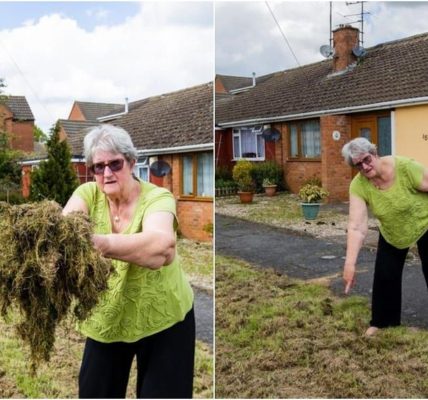Marks & Spencer’s impressive new wine range shines a light on lesser known producers from around the world
Marks & Spencer’s impressive new wine range shines a light on lesser known producers from around the world
For a business that usually works on having buyers heading out to wine regions, inspecting potential suppliers and creating blends, lockdown has been a bit restrictive.
Even so, Marks & Spencer has managed to put together a completely new range of wines, which it has called Found.
It has taken on board the fact that there are hundreds, if not thousands, of grape varieties and wines that never get to play on the international stage. Local, possibly neglected patches of vines will dwindle away if a farmer cannot make enough money from them to justify getting up in winter and pruning them.
These wines might just end up being served in the local cafe, or kept for family use. Does this matter? It depends on how much you like the stalwarts of the wine shelves. Sauvignon Blanc, Chardonnay and Cabernet Sauvignon dominate the wine lists and, while there are some fabulous wines made with those grapes, it is sometimes nice to have a change.
Another advantage is that many of these local gems offer terrific value. Before M&S buyers came along, these wines would not escape from their regional surroundings. So these are definitely wines that have been found, bottled up and sent for us to try.
But was it difficult putting together a range from the UK, especially since the buyers could meet up only occasionally under strict Covid rules? “From hundreds of samples sent over we managed to select the best, create some blends and then do all the regulatory checks at a distance,” says Sue Daniels, winemaker on the M&S team.
“It isn’t the usual way we work, but we used some existing suppliers and some new ones and we managed to get all the essential work done. One of the key factors in deciding which wines to add to the range was whether they showed the right amount of grape expression. These are different grapes and so they need to demonstrate their flavours. And they have to be delicious, too.”
And so, with 11 of the 12 wines from the Found range in front of me, each with distinctive photographic- style labels, reflecting local landmarks and people, this is what they taste like.
Feteasca Regala 2020, Romania, £7: Try Fet-ee-ask-ca Re-gala if someone wants to hear you say it, but better still just pour them a glass. Packed full of delicious honeysuckle notes with peach, crunchy apples and a sprinkle of spice. “We wanted this wine to be dry to make it food friendly”, said Daniels, and it certainly is. Try this alongside a lightly spiced dish, or a salad.
Ribolla Gialla 2020, Italy, £7: From north-east Italy, this is an ancient grape that is rarely bottled on its own. It has notes of jasmine, tangerine zest and hints of sage, with a clear, fresh finish. Pair with seafood, in particular scallop gratin.
Grenache Blanc 2020, South Africa, £8: Often used to fill out the palate in blends, this is 100 per cent Grenache Blanc from the Pardeberg area of Paarl, north of Cape Town. Most of the vines are grown without irrigation, which means they have to dig their roots down to survive. The grapes are small and full of flavour. This is a rich, mouth-filling wine, with apricot and peach notes, and enough structure to stand up to a pork chop or even a Cape Malay curry.
Moschofilero & Roditis 2020, Greece, £8.50: A blend of two Greek grapes, grown on a cool high plain in the southern Peloponnese. It has delicate floral aromatics, with a clear minerally structure. Terrific with fish and chips, or with a local dish of prawns in a tomato and feta sauce.
Gros Manseng 2020, France, £9: Another grape that is often part of a blend, but here it shows its fruit and balance perfectly. There’s peach, but this is a ripe, yellow peach, with all its furry skin in the mix, and there’s fresh orange zest and even a whiff of cinnamon. This can take on anything from scallops to roast chicken or duck liver paté.
Vinho Verde 2020, Rosé, Portugal, £7: I have had white Vinho Verde and even red ones, but never a rosé one until now. With a gentle pink colour, just a hint of typical Vinho Verde spritz and rounded raspberry and strawberry fruit, this is definitely dry, with a touch of lime on the finish. Team with a paella.
Nerello Cappuccio 2019, Terre Siciliane, £7: What a bargain. I had never heard of this grape before, but it shines out with dark fruity flavours, hints of liquorice and a streak of freshness. Smooth and silky, pour it with a pasta supper or a sausage from the barbecue.
Mazuelo 2019, Rioja, Spain, £8.50: One of the regular components of Rioja but usually added in condiment quantities. This is fabulous, with ripe back cherry fruit leaping out of the glass, followed by herbs, a seam of freshness and a long, long finish. Forget it is Rioja, it is Mazuelo.
País 2019, Chile, £9: Sadly this sample didn’t reach me, but if you see it, try it. País is a terrific local grape, full of cherry fruit and sheer quaffability.
Xinomavro, Mandilaria 2019, Greece, £9.50: This is a blend of two grapes. The Xinomavro comes from the mountainous north, while Mandilaria comes from the beautiful island of Santorini. The result is a full, rounded wine with dark forest fruits, a gentle structure and a long, satisfying finish. Big enough to match a beef stew.
Cabernet Franc 2019, Argentina, £10: This is 100 per cent Cab Franc from the prized vineyards of the Uco Valley. It is a gorgeous wine with dark cassis and blackberry fruit, a hint of chocolate and a sprinkle of herbs. Pour with meat.
Blanquette de Limoux NV, £10: Limoux beat Champagne to the secrets of making sparkling wines by over a century. Mainly comprising local grape Mauzac, this is a clean, fresh-tasting fizz, with some savoury depth.










